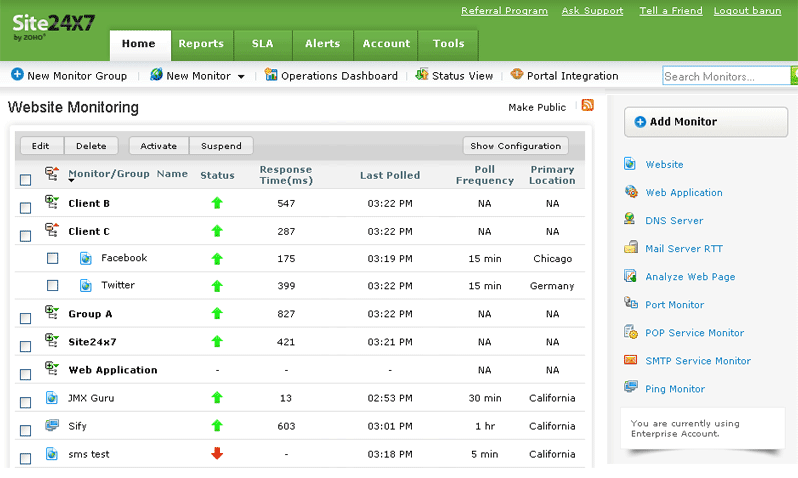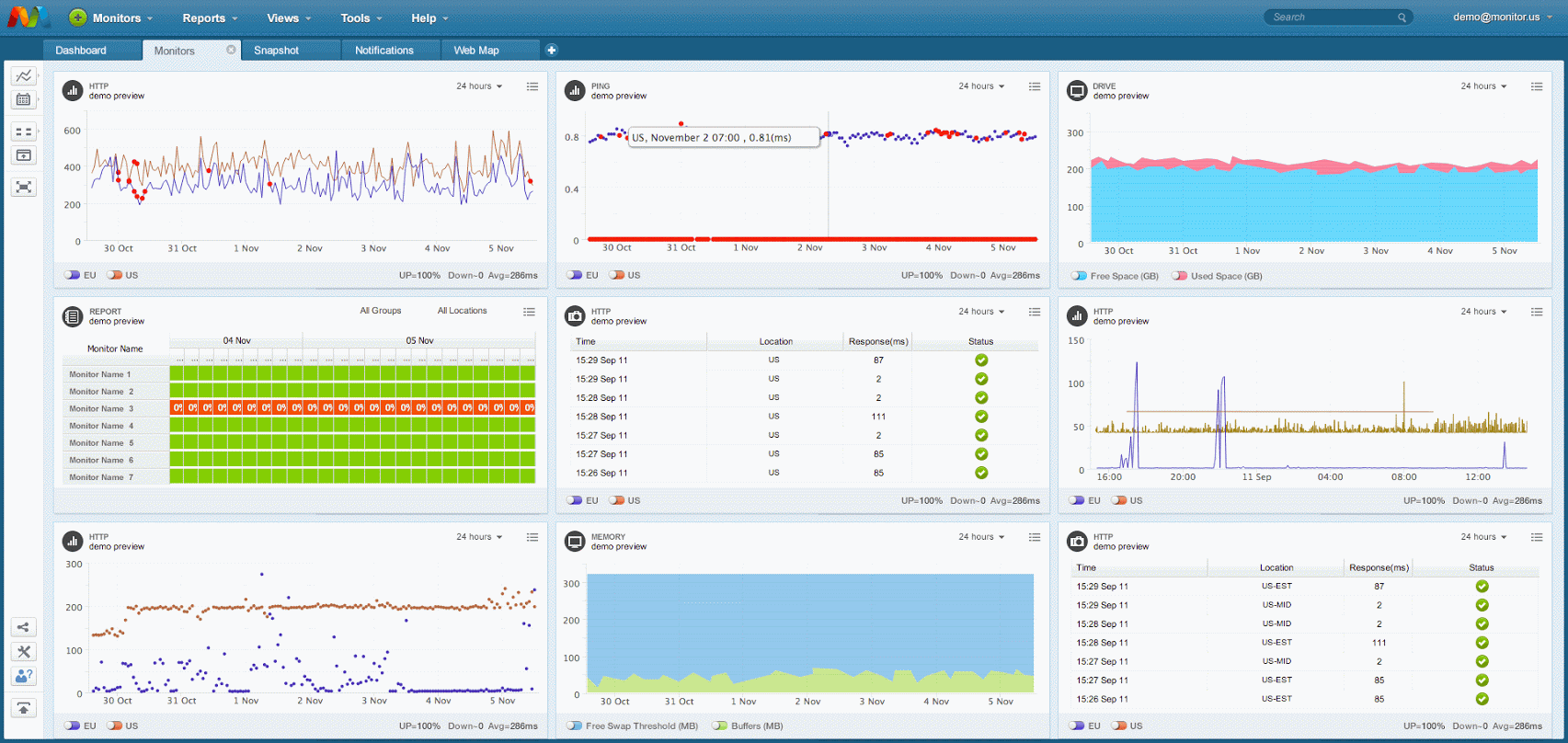

Statping has slightly more features included in their dashboard compared to Cachet - mainly well-designed maintenance and status announcements.
WEBSITE MONITOR HOW TO
Recommended reading: What Is Incident Management? Beginner’s Guide and How to Create a Developer-Friendly On-Call Schedule in 7 steps 16. Being on-call means that you are the first person that will receive an alert when something goes wrong. On-call calendar is a set of scheduled duties that define which team member is responsible for incoming incident alerts. Learning: learning from incidents, by writing postmortem, usually via incident management tools.Resolution: working on resolving incidents, usually via incident management tools.Communication: communicating incidents, usually via status page.Monitoring: detecting incidents, usually via monitoring tools.It can be broken down into four main parts: It’s the process used by the developer teams to respond to system failures (incidents) and restore normal service operations as quickly as possible. For example, it can hold off a low-priority alert till the morning and then send a Slack message or immediately call the whole team in case of a severe incident. Once a monitoring tool spots an incident, it sends the alert to the incident management tool, which then decides who, how and when is someone (or everyone) alerted. These tools work in tandem with purely monitoring tools, offering advanced alerting options and on-call schedules. Its UX is very basic and honestly quite dated. Zabbix is an enterprise-build solution allowing you to monitor networks, servers, cloud, logs, databases, apps, and yes, websites.Īlthough powerful, it’s one of the tools that require a lot of learning. Recommended reading: What is synthetic monitoring? 1. Availability monitoring is a subset of those checks, specifically aimed at whether the service is reachable.

Synthetic monitoring works by sending automated requests from a robot client to your app, simulating what a regular user would do. Performance (with real-browser monitoring).Availability (with availability or uptime monitoring).synthetic monitoring, what’s the difference?Īvailability monitoring is a part of the synthetic monitoring toolbox, which consists of monitoring for: Since they are not essential in solving the website monitoring challenge, we have left them out of this selection.Īlso called uptime monitoring tools - they alert you when your website goes down. However, it can be replaced by dedicated logging, bug tracking, or observability tools depending on the specific problem one is trying to solve. We didn’t include APM: Application Performance Monitoring (Application Performance Management) tools.Īn APM tool is a good addition to a monitoring stack, giving insights into errors, traces and key transactions. In those cases, we have put them into the category based on what we thought the tool is most suited for. For example, offer both availability monitoring and RUM. Sidenote: Several of the mentioned tools have multiple functionalities. Some platforms offer monitoring together with logging, visualizations, and other tools under one roof. Status page tools: Used to communicate website downtime and incidents to users, clients, or internal teams on a dedicated page.Ĭomplete observability platforms: Alternative to dedicated monitoring tools. Incident management and On-call tools: For teams that need advanced alerting and incident management not-offered by regular monitoring tools. Open-source monitoring tools: Simple and advanced tools that can be self-hosted and customized to a great extent. Real user monitoring (RUM) tools: Used for measuring real-life analytics of website users - very similar to browser and transaction monitoring tools just in real-time, not simulated. Since website monitoring includes anything from basic availability (uptime) checks to monitors that simulate browser behavior on different devices, we grouped the most well-known tools into common categories:Īvailability monitoring tools: For teams and indie hackers looking to get the most vital functions like uptime, SSL certificate, and ping checks.īrowser and transaction monitoring tools: Tools focused on simulating perceived user experience on a given website using a specific device or browser and for checking common user paths like signup, user login, or payment confirmations.
WEBSITE MONITOR PROFESSIONAL
Looking to formalize your website monitoring by picking a professional solution? Or just checking alternatives to what you’re already using?


 0 kommentar(er)
0 kommentar(er)
